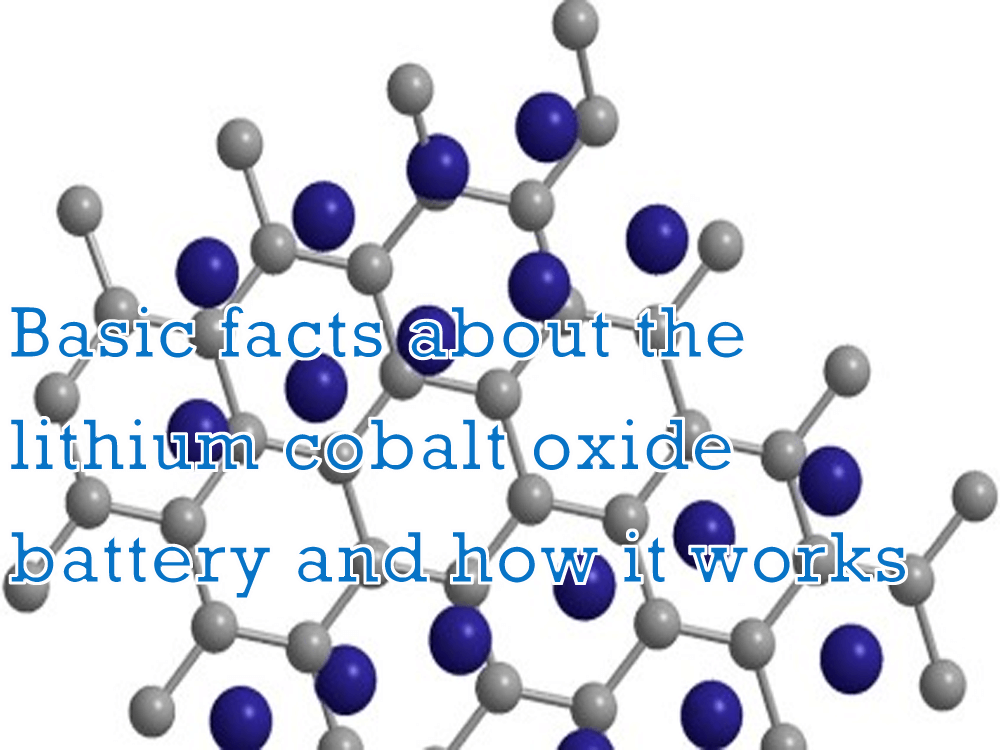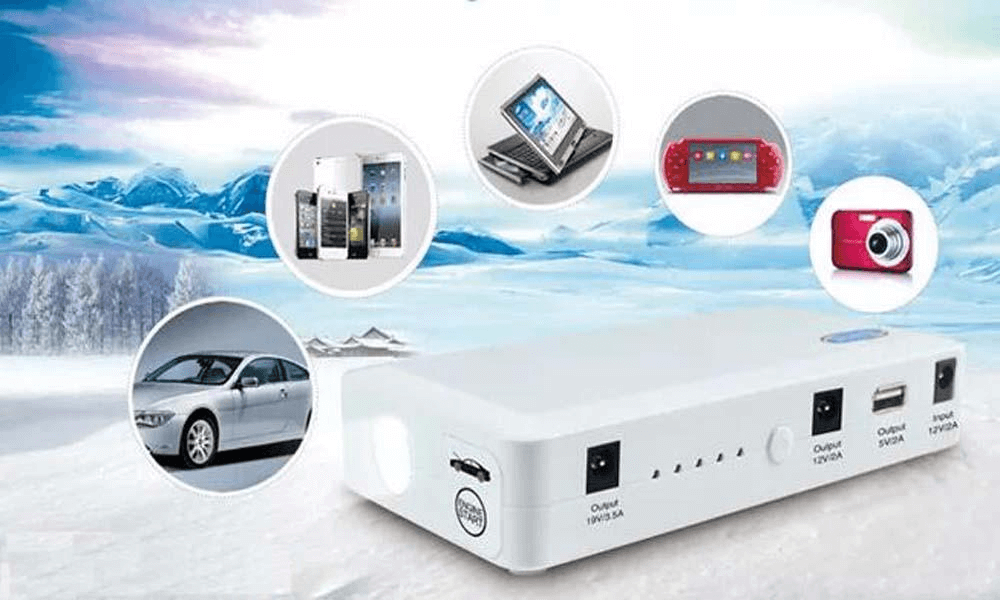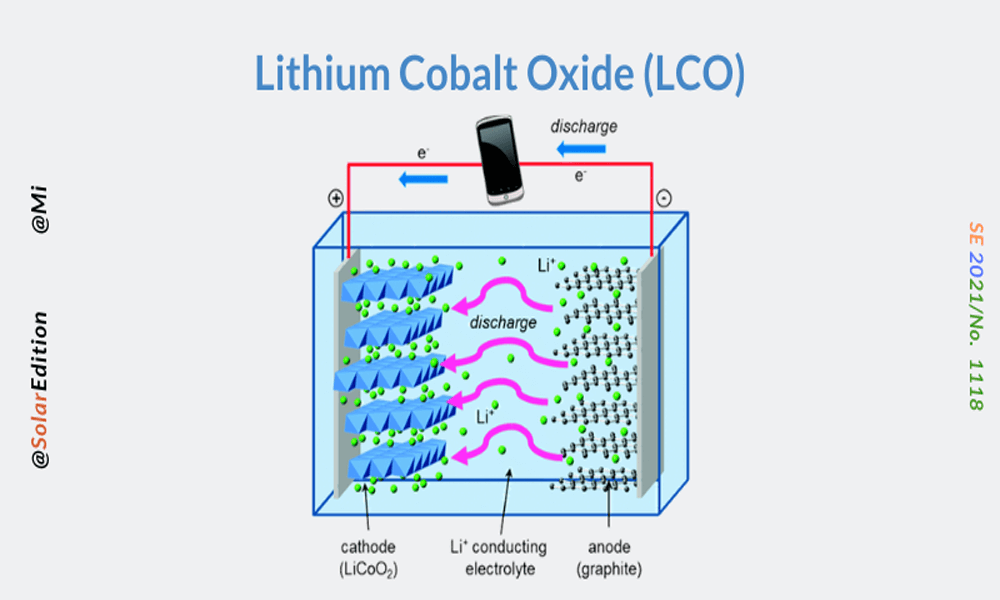Home » Battery Materials » Basic facts about the lithium cobalt oxide battery and how it works
Basic facts about the lithium cobalt oxide battery and how it works
- What is a lithium cobalt oxide battery
- What is lithium cobalt oxide used for
- Is lithium cobalt oxide safe
- Which battery is better LiFePO4 or cobalt
- Is lithium-ion the same as lithium cobalt
- The comparison of lithium cobalt oxide batteries with other lithium ion batteries
- Do tesla LFP batteries contain cobalt
- Do lithium batteries need cobalt
- Conclusion
Consider a world without the lithium cobalt oxide battery; some small consumer devices would not work. The lithium cobalt oxide battery powers a part of modern electronics, including heavy cell phones and laptops. As a result, it is apparent that batteries play a role in the existence of small consumer electronics.
Do you own a device that runs on a Lithium Cobalt Oxide battery? If so, you’ll need a better understanding of the battery’s major characteristics and components. In this article, you’ll learn about the lithium cobalt oxide battery’s essential qualities, such as its power storage capacity, level of safety, and components.
What is a lithium cobalt oxide battery
The lithium cobalt oxide battery is made from lithium carbonate and cobalt. When the lithium cobalt oxide battery is charging, the carbon present in their chemical reaction acts as the anode that discharges the lithium ions, while the cobalt oxide acts as the cathode that accepts lithium ions. Similarly, during discharging, the carbon releases lithium ions that flow back to the cobalt oxide.
The lithium cobalt oxide battery has both specific energy and specific power properties. Though the battery operates with a high specific energy (capacity), its specific power (power output) is low. These batteries cannot work well in high-load applications due to their low power output, though they can store and provide power for a short time due to their high energy storage capacity.
What is lithium cobalt oxide used for
The lithium cobalt oxide battery is commonly used to power portable electronics such as smartphones, tablets, laptops, and cameras. These batteries are suitable for mobile devices because they have a high charge density, which means they can store a lot of energy without being too heavy.
Is lithium cobalt oxide safe
Cobalt, unlike lithium, is poisonous and reactive by itself. It poses a risk of heat dissipation, a chemical reaction inside the battery that occurs regardless of temperature, when utilized in lithium-ion batteries.
When a cobalt battery degrades and enters a state of overheating, it creates a raging fire that is hazardous and cannot be put out with water or flame preservatives, nor can it be confined within its enclosure. However, the flame must be left to burn until poisonous gasses are released. So it’s not environmentally friendly.
Beyond the dangers of fire, cobalt exposes individuals and the environment to harmful substances at every stage of the mining process. Due to a lack of safety measures, workers are exposed to high levels of cobalt in these hazardous working settings, which can cause health problems ranging from difficulty breathing to asthma, pneumonia, and heart damage.
Which battery is better LiFePO4 or cobalt
When the characteristics of two batteries, such as lithium iron phosphate and lithium cobalt oxide, are compared, some basic properties like the lifespan of lithium iron phosphate batteries without the presence of the cobalt element are 2 or 3 times greater than those of a lithium cobalt oxide battery.
Furthermore, while lithium cobalt oxide batteries charge faster in a short period of time, they cannot be used for an extended period of time. But in the case of lithium ion phosphate batteries, though it may take a longer time to charge, the energy stored when fully charged will last for a long time without affecting the lifespan.
When considering their long battery life, Li-phosphate batteries are typically the most cost-effective alternative.
Because of their commendable long lifecycle, lithium iron phosphate batteries are commonly recognized and used as power sources for solar panels, electric vehicles, bikes, and more applications that need a stable power supply.
Because of their superior properties such as high thermal stability, safety, and long lifecycle, lithium iron phosphate batteries are regarded as a better option than lithium cobalt oxide batteries.
Is lithium-ion the same as lithium cobalt
The lithium ion battery is totally different from the lithium cobalt oxide battery. While lithium cobalt oxide battery chemistry requires the hazardous cobalt element to function, the lithium iron phosphate battery chemistry, on the other hand, does not need cobalt at all. Its chemistry makes it a good innovation since it removes toxicity and the risk of thermal runaway.
Due to its great thermal stability and low electrolyte oxidation capability, lithium iron phosphate is extremely safe.
The comparison of lithium cobalt oxide batteries with other lithium ion batteries
There are about six different lithium-ion batteries that are made of six different cathode elements. These batteries also come in different shapes and sizes, but what differentiates them is their cathode materials. In each lithium ion battery, there are specific properties that are common to them all, but vary from one battery to the other. Some of these characteristics or properties include:
• Specific power
• Specific energy
• The safety level of the battery
• The lifespan of the battery
• The cost of each battery and,
• Their level of performance.
As for lithium cobalt oxide batteries, they are built to function with low specific power, high specific energy, a low safety level, a short lifespan, low cost, and a moderate performance rate.
For the lithium iron phosphate batteries, they have high specific power, low specific energy, good safety attributes, are designed to last for a long period at low cost, and perform moderately.
We can also compare the lithium nickel manganese cobalt oxide to the lithium cobalt oxide battery according to their basic properties listed above. Despite the fact that they both contain the cobalt element, their characteristics are vastly different. Lithium-nickel manganese cobalt oxide batteries have a moderate specific power, a higher specific energy, are moderately safe to use, have a longer lifespan, are relatively inexpensive, and perform well.
Do tesla LFP batteries contain cobalt
You might be curious if Tesla, one of the most well-known electric vehicle manufacturers, uses cobalt-based batteries. The answer is no. This is due to the fact that cobalt, the metal used to build lithium cobalt oxide batteries, has been barred by electric vehicle manufacturers due to the risk of overheating. Unlike lithium, cobalt is dangerous and reactive on its own, so it must be removed from electric vehicles before they can be charged.
Do lithium batteries need cobalt
The lithium iron phosphate battery, which will be used to power all of Tesla’s electric cars, is already a feasible cobalt-free option. As a result, they would not need to use cobalt in their batteries.
Also, cobalt is known to be the most expensive material used for lithium batteries, compared to other materials such as lithium, nickel, aluminum, iron, and manganese. Therefore, using cobalt-free batteries such as lithium iron phosphate will bring down the cost of electric vehicles.
Conclusion
To summarize, lithium cobalt oxide batteries are only suitable for small devices such as cell phones and computers due to their limited lifespan and low specific power. For high-load applications such as electric automobiles and power bikes, they are inefficient.
























